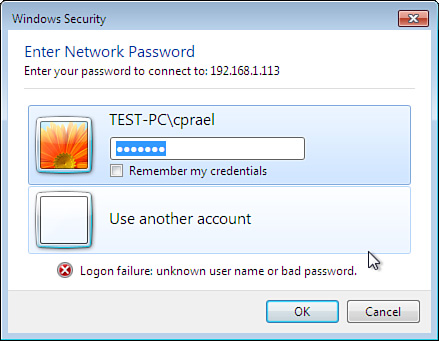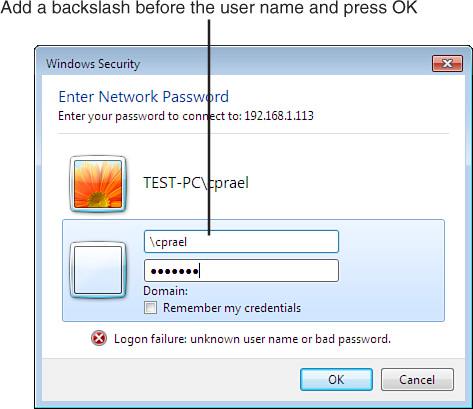Setting Up Your Home Network
Assuming your computer is a
laptop that travels with you from home to work, to the local coffee
shop or library, or to other locations, one of your first tasks after
installing Windows 7 should be setting up your home network.
In Windows 7, when you
select the Home network profile, your system knows that you are “at
home” and will start the essential services required for successful file
and printer sharing in the home. This provides an intuitive entry point
into HomeGroup, and after you are “at home,” the automatic network
discovery facility starts looking for other Win7 PCs in the home. If you
already have an active HomeGroup, you can join it—or, if not, create
one.
When you click
Networks and Sharing on the Control Panel and click on the name of the
first network (not the icon) shown under View Your Active Networks, you
see the screen shown in Figure 4.
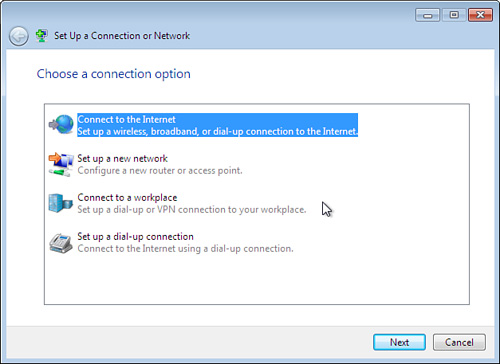
Picking one of these types of network does two things:
It
gives Windows some basic information that allows the system to
automatically set up some of the connections and specifications that are
normally found in that type of network. You can tailor these
specifications later on, but at least you’ll have the framework with
which you can work.
It gives this network a default name (which you can change later).
Basically, your home
network is where you’re likely to set up two or more computers, a
printer, maybe a scanner, maybe some external storage devices, and so
on. You can add more connections to other devices, such as an automatic
connection to your cell phone or to a wide screen TV, through the Media
Center or HomeGroup later on.
Your office network doesn’t
have to be in a physical office, nor does it have to be in a different
place from your home network. This type of network is more
about higher levels of security, such as using your laptop in a coffee
shop, or connecting to a corporate network to let you work at home.
A public
network is also about security. More importantly, it provides additional
levels of security to protect your computer from others using the same
network, such as might be found in a hotel’s network where there are
in-room connections.
To set up a home network, follow these steps:
1. | If
your PC does not have a network adapter (often called a NIC) installed,
you will need to install it first. Follow the instructions that came
with the adapter. Most likely, however, your computer came with a
network adapter already installed.
|
2. | On the Control Panel, click the Network and Sharing option.
|
3. | Select Home Network.
|
4. |
If your computer is connected to a network, but you’re setting it
up so that Windows 7 can recognize it, you’ll see a screen like that
shown in Figure 5
describing the active network, with whatever name (or lack of name)
you’ve given it. (If you have already connected your computer to the
network adapter so you can reach the Internet, that connection will be
shown here as depicted in Figure 5.)
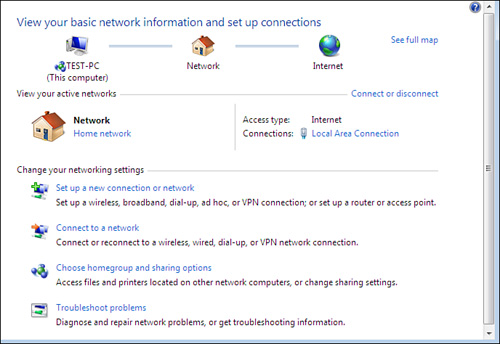
|
Note
Note that the top portion of the dialog box shown in Figure 9.5
shows what the system can automatically detect about the network you’re
setting up. The bottom portion of the screen displays the options you
have for your network settings.
The following
sections walk you through many of the network setup options available to
you. However, understand that networking is an enormous topic and not
one that we can cover in its entirety here. If you want to learn more
about Windows 7 networking, we suggest you pick up a copy of Microsoft Windows 7 Unleashed, by Robert Cowart and Brian Knittel, published by Que.
Connecting to the Internet for the First Time or Setting Up a New Home Network
Follow these steps if you are connecting to the Internet for the first time or are setting up a new Home Network:
1. | Click on Set Up a New Connection or Network. On the next screen choose your connection option.
|
2. | If you’re connecting to the Internet for the first time with this computer, select the first option and click the Next button.
|
3. | On the next screen, select Create a New Connection and click the Next button.
|
4. | On
the next screen, select the type of connection option you want to use.
Since you have already installed your network connector device, you will
know what kind of data transmission it is using— broadband, cable
modem, Wi-Fi, and so on. Select the appropriate option. If it isn’t
shown, select Show Connection Options That This Computer Is Not Set Up
to Use, and follow the instructions.
|
5. | If
you’re connecting to the Internet, enter the information from your
Internet Service Provider (ISP) and click the Connect button. The system
will automatically connect you to the Internet to the default web page
with Internet Explorer 8, and you can browse to just about anywhere on
the Internet.
|
6. | If
you’re setting up a new network, be sure you have set up a router or
network access device (follow the manufacturer’s directions to install
it). When it’s been set up correctly, navigate to the Home Network
screen depicted earlier in Figure 4, select Set Up a New Network and click the Next button.
|
7. | On
the next screen, Windows 7 lists the wireless routers or other access
devices it can detect. Select the one you want to use and click the Next
button.
|
8. | Type
in any connection information your ISP might have provided you. ISPs
will often provide you with a user name and password to secure your
login. If they did, then you should enter them at this time. Your
connection might not require a login, however, so if your ISP’s
instructions ignore that issue, you will not need to put that
information in here.
|
Setting Up a Connection to an Existing Network
In order to connect to an existing network, you will need to follow these steps:
1. | If
this network is to connect to the Internet, set up the connection with a
cable or DSL modem and an account with an Internet service provider.
You will likely be sharing this connection with other computers in the
house, so make sure they are connected to the cable or DSL modem, too.
If you’re using a cable connection, such as Comcast, you’ll receive
directions for setting up the hardware and this connection from the
service provider. Follow these instructions:
If you’re
using a DSL or other high speed connection, you’ll be connecting to a
special phone line. If this is provided by your phone company, they will
usually provide the connection to the main phone wiring box for your
house and you’ll need to provide the wiring from there to your computer.
You can either string the phone wire yourself (frequently under your
house, if you have a basement or crawl space) or have a technician do
it. That phone wire will end in a junction box, and your phone company
will show you what kind of box this needs to be. You can buy this
junction box at most hardware stores. If you’ll be using a Wi-Fi connection to the Internet. If
you’re connecting to an existing network in your house or office, there
will be a network connection device to which other computers and
devices may be already connected. Simply plug in to the device a cable
with an Ethernet connector and plug the other end of the cable into the
Ethernet port on your computer. Another
popular option is to have a wireless connection included as part of
your network connection, allowing you to wirelessly connect from
anywhere in your home or office. Alternately,
you may have a more sophisticated network in your home or office, using
network switches to connect the computers, printers, and other devices
in your home. If so, you will plug your computer into the switch, rather
than directly into your network device.
|
2. | Once you’ve plugged your computer into the network, return to the Network and Sharing screen and choose Connect to a Network.
|
3. | The
right side of the screen shows you that you’re connected to a network,
which might be simply named “Network,” unless you’ve given it a name
such as “Home” or “Office.” The choices below that indicate the types of
network connection you can choose. If you have a DSL or cable
connection, Broadband Connection will appear with a blue box around it
as shown in Figure 6,
which means it’s the default type of connection. Select it and click
the Connect button. If you’re connecting to a dial-up modem, or to a VPN
network, and you’ve set up the connection, those choices will appear as
blue on this screen. Choose the appropriate one and click the Connect
button.
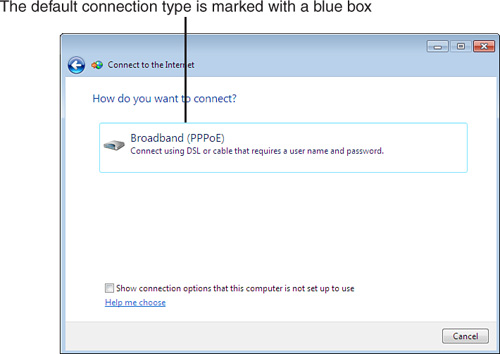
|
4. | In
either case, the connection will be made and you’ll be prompted for a
user ID and password. Enter the appropriate information and click the
Connect button. Your connection will then be live and you can
communicate via the network you just joined.
|
Connecting to Your Office Network
Follow these steps to connect to your office network:
1. | Click on Set Up a New Connection or Network. On the next screen choose your connection option.
|
2. | Select Connect to a Workplace and click the Next button.
|
3. | On
the next screen, choose either the Virtual Private Network (VPN) option
or the dial-up option. If you already have an Internet connection, the
system will use it to set up what amounts to a private tunnel through
the Internet to reach your workplace’s servers. If you have to dial into
the workplace network, you’ll need to provide the appropriate phone
number that your system can use to place the phone call.
|
4. | If
you’re using a dial-up connection (usually a modem that automatically
dials a phone number to set up a connection), make sure your modem is
switched on and connected to a phone line; then select Set Up a Dial-up
Connection and click the Next button.
|
5. | Enter
the phone number as requested and click the Next button. You will have
to provide appropriate login ID and password information each time you
connect.
|
6. | In
either case, once you’ve completed the process, you’ll have a live
connection. You will likely have to provide appropriate login ID and
password information each time you connect.
|
Adding Another Computer to Your Home Network
1. | Plug in the connecting cable between the other computer and your network adapter or router. Windows will automatically try to determine
what other computers are on the network and will store that information
for you.
|
2. | When
the other computer was first started, whoever set up or configured it
was required to give it a name (such as Perry, George, Living Room, or
something meaningful). That became the system name, and is what your
system looks for. Now you need to set up a network connection.
If you want to connect to another Windows 7 system, you probably want to set up a HomeGroup. If,
however, you want to connect a non-Windows 7 computer, or you don’t
want to use a HomeGroup, you need to do things a little differently. So
start up Windows Explorer by clicking on the Explorer icon on the
taskbar as shown in Figure 7.

|
3. | Click
on the Network item on the left side to see all of the computers (and
other network devices) on your local network that your system was able
to find as shown in Figure 8.
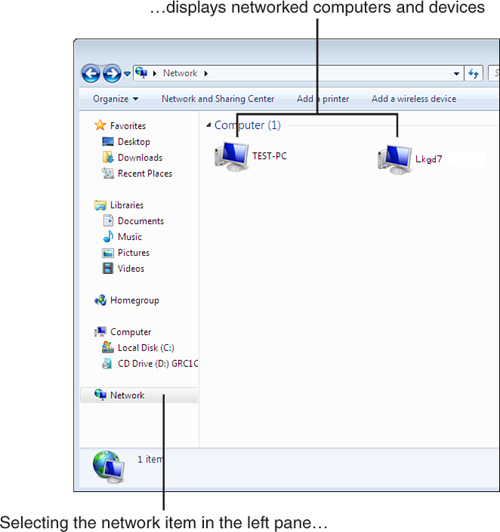
|
4. | Next,
click on the system that you want to connect to. You will probably be
asked for a user ID and password. What you need to enter is the user
name and password from that other system that you want to use to log in.
|
5. | Once
you have logged in to the other computer, you can see the various
resources that are shared and available on the other computer, as shown
in Figure 9.
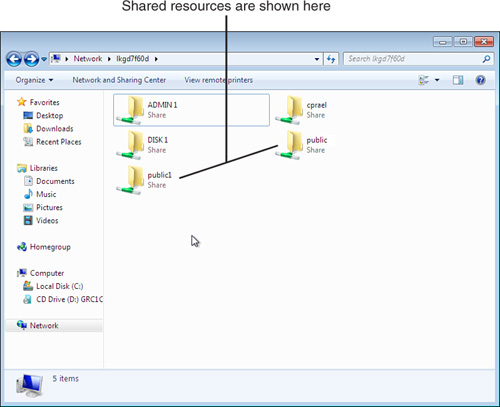
|
Understanding Domains
An additional
concept that occasionally can cause problems is that of domains. Domains
are used by Windows as a central repository of login information.
Within a domain, you can use the same user name and password on all
systems in the domain. Windows 7 turns on domains by default—and if you
do not connect to an outside domain—declares your Windows 7 system as
the controller of the domain.
If you attempt to log in to a non-Windows 7 computer that isn’t part of that domain, you will receive a login failure (see Figure 10).
To work around this problem, you will need to click Use Another
Account, and then force the login to be domainless by adding a backslash
(\) character in front of the user name (see Figure 11).
